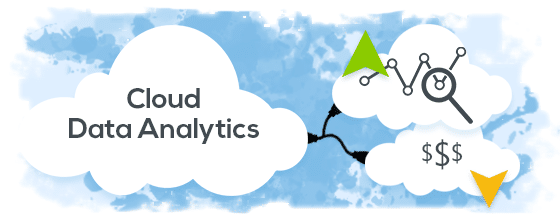Gone are the days of siloed data and delayed reports. In today's hyper-competitive landscape, the ability to instantly glean insights from vast oceans of information is not just an advantage—it's a necessity for survival. This is the realm of cloud analytics, a transformative force that has shifted business intelligence from a backend IT function to a frontline, strategic weapon accessible to decision-makers at every level. By leveraging the scalable power of the cloud, organizations are now predicting trends, optimizing operations, and personalizing customer experiences with unprecedented speed and precision.
The momentum behind this shift is staggering. According to Straits Research, the global cloud analytics market size was worth USD 34.10 billion in 2024 and is estimated to reach an expected value of USD 189.59 billion by 2033, growing at a CAGR of 21% during the forecast period (2025-2033). This explosive growth is fueled by a relentless pace of innovation from key technology players, each vying to offer more powerful, intuitive, and integrated analytical capabilities.
Key Players and Strategic Innovations
The competitive field is a mix of established hyperscalers and specialized analytics firms. From the United States, Microsoft (Azure Synapse Analytics) is pushing the boundaries of integration, recently announcing deeper autoML capabilities that allow data scientists to build and deploy machine learning models directly within their analytics workspace. Their competitor, Amazon Web Services (AWS, USA), continues to expand its data lake integration, with recent updates to Amazon QuickSight focusing on automated, natural-language-driven insights, allowing non-technical users to ask questions of their data and receive visual answers.
Google Cloud (Alphabet Inc., USA) is leveraging its core strength in AI with its BigQuery platform. A key recent update includes the integration of Vertex AI, enabling users to build and run machine learning models on massive datasets without moving them. From Germany, SAP is fortifying its position by embedding cloud analytics directly into its enterprise ERP and CRM solutions, providing real-time operational intelligence. Similarly, Salesforce (USA) continues to blur the lines between CRM and analytics, with its Tableau and Einstein Analytics platforms offering predictive insights directly within the sales and service workflows.
Emerging Trends Reshaping the Landscape
The evolution of cloud analytics is defined by several key trends. The most significant is the rise of Augmented Analytics, where AI and machine learning automate data preparation, insight discovery, and sharing. This moves the burden from human analysts to algorithms, which can tirelessly uncover hidden patterns and correlations. Secondly, the concept of the Data Cloud is gaining traction—a unified, integrated layer that allows for the seamless sharing and analysis of data across different cloud platforms and regions without the need for complex extraction or movement.
Furthermore, Real-Time Analytics is moving from a luxury to a standard expectation. Businesses are no longer satisfied with yesterday's news; they require live dashboards that reflect current customer behavior, supply chain movements, and financial fluxes. This is powering use cases in dynamic pricing, fraud detection, and immediate customer service intervention. Finally, there is a growing emphasis on Data Governance and Security within the cloud, with providers embedding finer-grained controls, compliance certifications, and privacy-preserving technologies like differential privacy directly into their analytics services.
Recent Global Developments and News
The industry is abuzz with strategic moves. In a significant partnership, Snowflake (USA) and NVIDIA (USA) announced a collaboration to empower enterprises with an accelerated computing platform for AI and data processing within the Snowflake Data Cloud. This directly targets the need for high-performance model training. From China, Alibaba Cloud launched a new region-specific analytics solution focused on helping multinational companies comply with the country's stringent data sovereignty laws.
A notable recent update came from IBM (USA), which infused its Cloud Pak for Data with new AI-powered automation features designed to automatically catalog and classify data, a critical step in building trusted AI models. Meanwhile, Oracle (USA) is touting the performance benefits of its MySQL HeatWave service, which integrates analytics directly into the database, challenging the traditional extract-transform-load process and promising dramatically faster insights.
The narrative of cloud analytics is one of empowerment and acceleration. It is breaking down the barriers between data and decision, enabling a culture where evidence-based strategy is the norm, not the exception. As AI becomes more sophisticated and integration becomes more seamless, these platforms will evolve from being tools of analysis to becoming active partners in shaping business strategy, forecasting the future, and driving innovation from the ground up.




